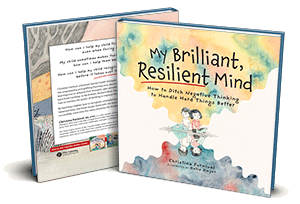Hi there! I’m Christina, a mom of two littles, a licensed mental health therapist, and a soon-to-be children’s book author! Thanks for checking out my site. Look around! I’m sure there’s something here for you! This guest article is by Stacey with Home Day Hero about fostering independence in the home, thereby minimizing tantrums and battles.
Fostering Independence at Home
Empowering our Children with Home Day Hero
Hi, I’m Stacey and I am the founder of Home Day Hero, your resource for every day solutions! Home Day Hero builds strong foundations for young children through supporting children and their adults. We enhance the lives of families through thoughtful, meaningful support, and provide resources that guide parents, caregivers, and educators in furthering their children’s success by providing techniques to implement in every day life.
Home Day Hero offers a variety of types of support:
✅1:1 Coaching
✅Reading Camp
✅Fine Motor Skills and Letter Writing Practice Workbook
✅Monthly Activity Guide Membership: Fun at Home
✅Training seminars for schools, parents, educators, and educational facilities.
✅More than 70 free articles available on the blog: www.homedayhero.com
Follow Home Day Hero on Instagram: www.instagram.com/Stacey.homedayhero
Presenting Opportunities for Fostering Independence
I am drawn to the Montessori environment, and one of the many reasons is based upon some of the key characteristics: You are fostering independence and confidence in children. The shelving is low and the activities are accessible. The available activity options are generally safe and careful thought is given in an effort to reduce potential hazards. The prepared environment naturally supports a sense of concentration, promotes coordination, encourages independence, and supports a developing sense of order.
Everything in the space has it’s own place to “live,” so that when children are finished with an activity, it is easier for them to know where to replace the selected items.
Many of the activities have points of interest and control(s) of error.
Point of Interest
A Point of Interest is something that “draws the child in” and serves as an exciting component of the activity. So, if you have activities that “no longer seem interesting,” then, you may consider adding a new point of interest to draw them back into the activity. You’re fostering independence by prepping their activities for the child to determine on their own that they want to engage.
Some aged-based examples below:
- Preschoolers – Perhaps, your child loved playing with the tabletop sandbox outside, but has lost interest. What if you added as handful of small seashells, colorful gems, or even some small toys animals or tools for scooping?
- Lower Elementary – Perhaps, your child used to love playing with their lego set, but has recently lost interest. Consider finding a new container for the legos and adding some hand-drawn characters or some hand-drawn settings: the beach, the toy store, the land of the dinosaurs, etc.
- Upper Elementary – Perhaps, your child used to love science experiments, but has recently lost interest. Consider finding some of your child’s favorite experiments and talk about ways to “modify” add to the experiment, so the child can further predict what may happen through creating a hypothesis, then, encourage the child to try out the new experiments (the old experiments “with a twist”)!
Control of Error
Another way to foster independence is with Control of Error. Control of Error is a self-correcting component of an activity; which is most common for younger children and best seen in some of the very basic puzzles.
For example, if you have a puzzle with the large knob pieces, usually underneath the pieces there is a shape or picture of the exact piece the child removed. If the child goes to replace a piece in the wrong spot, it clearly will not fit AND the visible picture will not match exactly. Therefore, in this case, there are two controls of error. Another example is a matching card game, when two cards are flipped over and they do not match exactly, this can be considered a control of error, as well.
When thinking about and determining what is possible in your own home for fostering independence using control of error, it is easiest to consider activities that are related to practical life-based learning (everyday experience) or sensorial-based activities (those that appeal to the senses).
I’d like to categorize the activities into three main areas of focus: care of self, care of environment, and care of others.
Here are some practical-life examples for each:
- Care of Self: Taking dirty clothes and placing them in a laundry basket. Washing and drying one’s hands in the bathroom.
- Care of the Environment: Having a set place for toys and other belongings like shoes and coat will help children learn and know the expectation. It is also helpful to have appropriate tools available for cleaning up messes; such as appropriately sized dustpan, brush, broom, towels, etc. per your needs or environment.
- Care of Others: Finding a snack that can be shared or getting enough snack that everyone can enjoy. Getting a tissue or ice for someone that is hurt.
Here are some sensorial-based examples for each:
- Care of Self: Some simple ways to include this would be providing a few options for washing hands, body washing, and using lotion to moisturize the hands, feet, or body.
- Care of the Environment: Matching socks is a great way to encourage participation in the “clothes washing routine” and even encouraging children and to put their own clothes away, as they identify how to categorize the items and which drawers they should be placed.
- Care of Others: I love the opportunity to offer making juice (squeezing lemons and or oranges) or tea (picking mint or lavender and steeping) to share!
The Importance of Offering Two Choices
Children learn about appropriate options through the experience of being offered appropriate power. This approach also helps to remove and reduce power struggles (HALLELUJAH!). We already know that we must pick and choose our “battles,” however, by offering appropriate choices, we create the framework. Therefore, while the child feels like “they have all of the power,” as the adult you have the “ultimate power!”
Sharing the Roles of Leading and Following
What types of opportunities exist for children to practice leading and following?
We all take turns “being in charge,” but the experiences are ultimately crafted by the adult. Think about aspects of your daily life and environments or situations that you consider to be safe. Then, identify situations where you feel you can “let go of” the “perceived control”, in that you’re ok with either option the child selects. In these situations, the adult frames the scenario/situation.
Offering choices
My favorite example is snack time or the time that we have together to play after school: Would you like “this” snack today or “that” snack? Or, after school, should we go on a nature walk or to the park field? Another example, we live in a building with an elevator and in the morning, our maintenance man collects the recycling from each floor. To do so, he uses a large bin and takes the elevator. If he large bin is in the hallway, then, we cannot use the elevator; instead, we must take the stairs to exit the building. On days where the maintenance man is not emptying the recycling, we can take the elevator (my daughter’s preference), UNLESS my son insists on choosing the stairs, then the other child is able to choose the first song we listen to in the car; a compromise!
Giving power
For young children, a final example is regarding story time, by allowing (and encouraging) the kiddos to select the stories from the selection that is available, then, as the adult you “follow.” Where’s your power? You determine which book you would like available, then the child select from these options. The same could be said for clothes, shoes, coats, etc. Obviously, as the child gets older they may be interested in negotiating these components with you or totally deciding on their own. Identify ways to encourage communication and have conversations that involved input from both parties.
You are the hero in your own space. You know your kiddos best. Don’t change everything all at once; instead choose what makes the most sense for your life At this time. Ponder these questions, first:
- What is possible in your space?
- What things do you need to update or change?
- How can the child/children be a part of the process?

About Home Day Hero Founder Stacey Band:
Stacey Band, MPA, a mama of 2, a Montessori trained teacher and former school administrator, launched Home Day Hero to bring solutions to more families in more homes, worldwide! She has a passion for helping adults connect with their children, reduce power struggles, and encourage independence within young children. Her content provides tips and tricks to ease everyday stressors. Stacey’s content is enjoyed in more than 50 countries! Home Day Hero was voted #1 by Washington Parent Magazine Parent Picks 2020 and featured in the HiMama Webinar Series; along with The Preschool Podcast. She is also a member of the Female Founder’s Collective and the American Montessori Society (AMS). In her spare time, she loves to create new recipes, experiment with gardening, polish her nails, do projects with her kids, and play at the park with her family.
Ready to create your own adventure? Find Stacey here: https://linktr.ee/homedayhero


